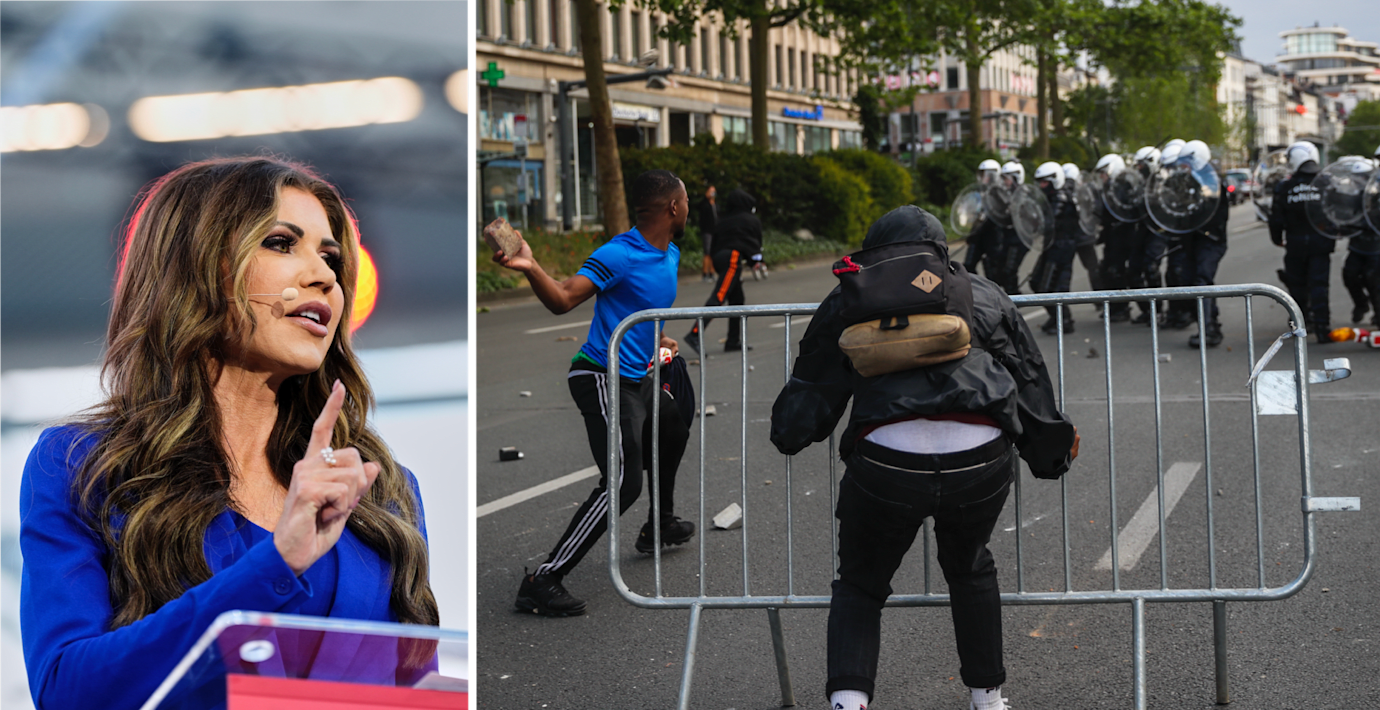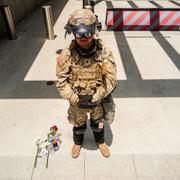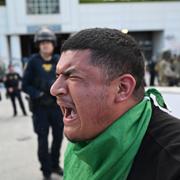
Noem: Det som hände 2020 får inte hända igen
Kristi Noem, minister för inrikes säkerhet i USA, säger att nationalgardet är på plats i Los Angeles för att säkerställa fred och ordning under de stora protesterna mot migrationsmyndigheten ICE.
I en intervju med CBS-programmet ”Face the nation” säger hon att de drygt 2 000 nationalgardisterna har tränats för just sådana här tillfällen. Hon riktar också hård kritik mot guvernören Gavin Newsom och borgmästare Karen Bass för att ha hanterat protesterna dåligt.
– Vi kommer inte låta det som hände 2020 upprepa sig, säger hon och refererar till de stora Black Lives Matter-protesterna i Minneapolis efter att George Floyd dödats.
bakgrund
Black Lives Matter-protesterna i Minneapolis 2020
Wikipedia (en)
Local protests over the murder of George Floyd, sometimes called the Minneapolis riots or the Minneapolis uprising, began on May 26, 2020, and within a few days had inspired a global protest movement against police brutality and racial inequality. The initial events were a reaction to a video filmed the day before and circulated widely in the media of police officer Derek Chauvin kneeling on Floyd's neck for several minutes while Floyd struggled to breathe, begged for help, lost consciousness, and died. Public outrage over the content of the video gave way to widespread civil disorder in Minneapolis, Saint Paul, and other cities in the Minneapolis–Saint Paul metropolitan area over the five-day period of May 26 to 30 after Floyd's murder.
Minneapolis sustained extensive damage from rioting and looting during the protests—largely concentrated on a 5-mile (8.0 km) stretch of Lake Street south of downtown—including the destruction of the city's 3rd police precinct building, which was overrun by demonstrators and set on fire. At cost of $350 million, approximately 1,300 properties in Minneapolis were damaged by the civil unrest, of which nearly 100 were entirely destroyed. Saint Paul suffered damages that totaled $82 million and affected 330 buildings, including 37 properties that were heavily damaged or destroyed, with most destruction along the University Avenue business corridor. The Bureau of Alcohol, Tobacco, Firearms and Explosives tracked 164 structure fires due to arson in the Twin Cities region during the riots.
Governor Tim Walz activated the Minnesota National Guard in response to civil unrest. The 7,123 troops activated represented the largest deployment of the state's forces since World War II. By early June 2020, violence in the Minneapolis–Saint Paul metropolitan area had resulted in at least two deaths, 604 arrests, and more than $500 million in damage to approximately 1,500 properties, the second-most destructive period of local unrest in U.S. history, after the 1992 Los Angeles riots. Violent protests in Minneapolis–Saint Paul over Floyd's murder largely subsided after May 30, 2020. The Minnesota National Guard and a multi-jurisdiction government command that responded to the riots demobilized on June 7, 2020.
Local protests and unrest over Floyd's murder continued in 2020–2023 and broadened to other issues of racial injustice. On May 2, 2023, the conclusion of the last criminal case for the four Minneapolis police officers responsible for murdering Floyd fulfilled a key demand of protesters that Derek Chauvin, J. Alexander Kueng, Thomas Lane, and Tou Thao all be held legally accountable.
Omni är politiskt obundna och oberoende. Vi strävar efter att ge fler perspektiv på nyheterna. Har du frågor eller synpunkter kring vår rapportering? Kontakta redaktionen



